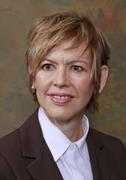MedicalResearch.com Interview with:
David Spence M.D., FRCPC, FAHA
Professor of Neurology and Clinical Pharmacology
Director, Stroke Prevention & Atherosclerosis Research Centre,
Robarts Research Institute, Western University
London, ON Canada
MedicalResearch.com: What is the background for this study? What are the main findings?
Response: The motivation for the study was the chair of the committee that advises the Ontario Drug Benefit which medications to pay for said the IRIS results were not relevant to clinical practice. This because the Insulin Resistance Intervention after Stroke (IRIS) trial reported effects of pioglitazone in patients with stroke or TIA and insulin resistance assessed by the Homeostasis Model Assessment of Insulin Resistance (HOMA-IR) score for insulin resistance.
1 ( However, few clinicians measure a HOMA-iR score, so the clinical impact of that trial was limited.
In this study we analyzed the effect of pioglitazone in stroke/TIA patients with prediabetes, which is commonly assessed by clinicians. Prediabetes was defined by the American Diabetes Association: a glycosylated hemoglobin (A1C) of 5.7% to <6.5% (we did not do glucose tolerance tests). We analyzed primarily the results for patients with 80% adherence, but also did an intention-to-treat (ITT) analysis. The reason for focusing on patients with good adherence was that pioglitazone cannot be taken by about 10-20% of patients, because of fluid retention and weight gain (mainly due to fluid retention). (The reasoning was that third party payers would not need to pay for the medication in patients who do not take it.)
In stroke/TIA patients with good adherence, the benefits of pioglitazone were greater than in the original IRIS trial. We found a 40% reduction of stroke/MI, a 33% reduction of stroke, and an 80% reduction of new-onset diabetes, over 5 years. Pioglitazone also improved blood pressure, triglycerides and HDL-cholesterol. As expected, pioglitazone was somewhat less beneficial in the ITT analysis.
Fluid retention can usually be managed by reducing the dose of pioglitazone; even small doses still have a beneficial effect . Also, amiloride has been shown to reduce fluid retention with pioglitazone.
- Kernan WN, Viscoli CM, Furie KL, Young LH, Inzucchi SE, Gorman M, Guarino PD, Lovejoy AM, Peduzzi PN, Conwit R, Brass LM, Schwartz GG, Adams HP, Jr., Berger L, Carolei A, Clark W, Coull B, Ford GA, Kleindorfer D, O'Leary JR, Parsons MW, Ringleb P, Sen S, Spence JD, Tanne D, Wang D, Winder TR and Investigators IT. Pioglitazone after Ischemic Stroke or Transient Ischemic Attack. N Engl J Med. 2016;374:1321-31.
(more…)






























